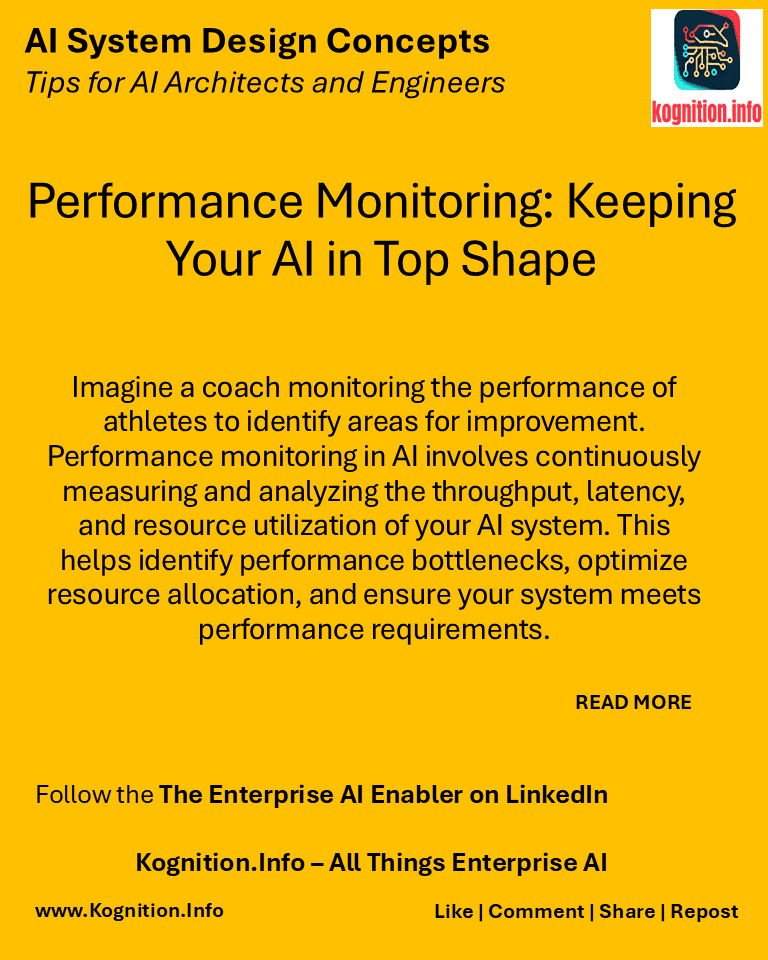
Imagine a coach monitoring the performance of athletes to identify areas for improvement. Performance monitoring in AI involves continuously measuring and analyzing the throughput, latency, and resource utilization of your AI system. This helps identify performance bottlenecks, optimize resource allocation, and ensure your system meets performance requirements.
Use cases:
- Tracking throughput: Monitoring the number of predictions or transactions processed per second to ensure adequate capacity.
- Measuring latency: Tracking the time it takes for the model to make predictions and identify performance bottlenecks.
- Monitoring resource utilization: Observing CPU, memory, and GPU usage to optimize resource allocation and identify potential scaling needs.
How?
- Define performance metrics: Identify key performance indicators (KPIs) relevant to your AI application.
- Collect performance data: Use monitoring tools and techniques to collect data on throughput, latency, and resource utilization.
- Visualize and analyze data: Use dashboards and visualizations to analyze performance trends and identify bottlenecks.
- Optimize performance: Address performance issues by optimizing code, adjusting resource allocation, or scaling infrastructure.
Benefits:
- Improved efficiency: Optimize resource utilization and reduce costs.
- Enhanced user experience: Ensure fast response times and a smooth user experience.
- Proactive capacity planning: Anticipate future resource needs and scale infrastructure accordingly.
Potential pitfalls:
- Focusing on the wrong metrics: Tracking irrelevant metrics can lead to misleading conclusions.
- Ignoring context: Analyzing performance data without considering the context of the application can be misleading.
- Overlooking external factors: External factors like network latency or data volume can impact performance.
